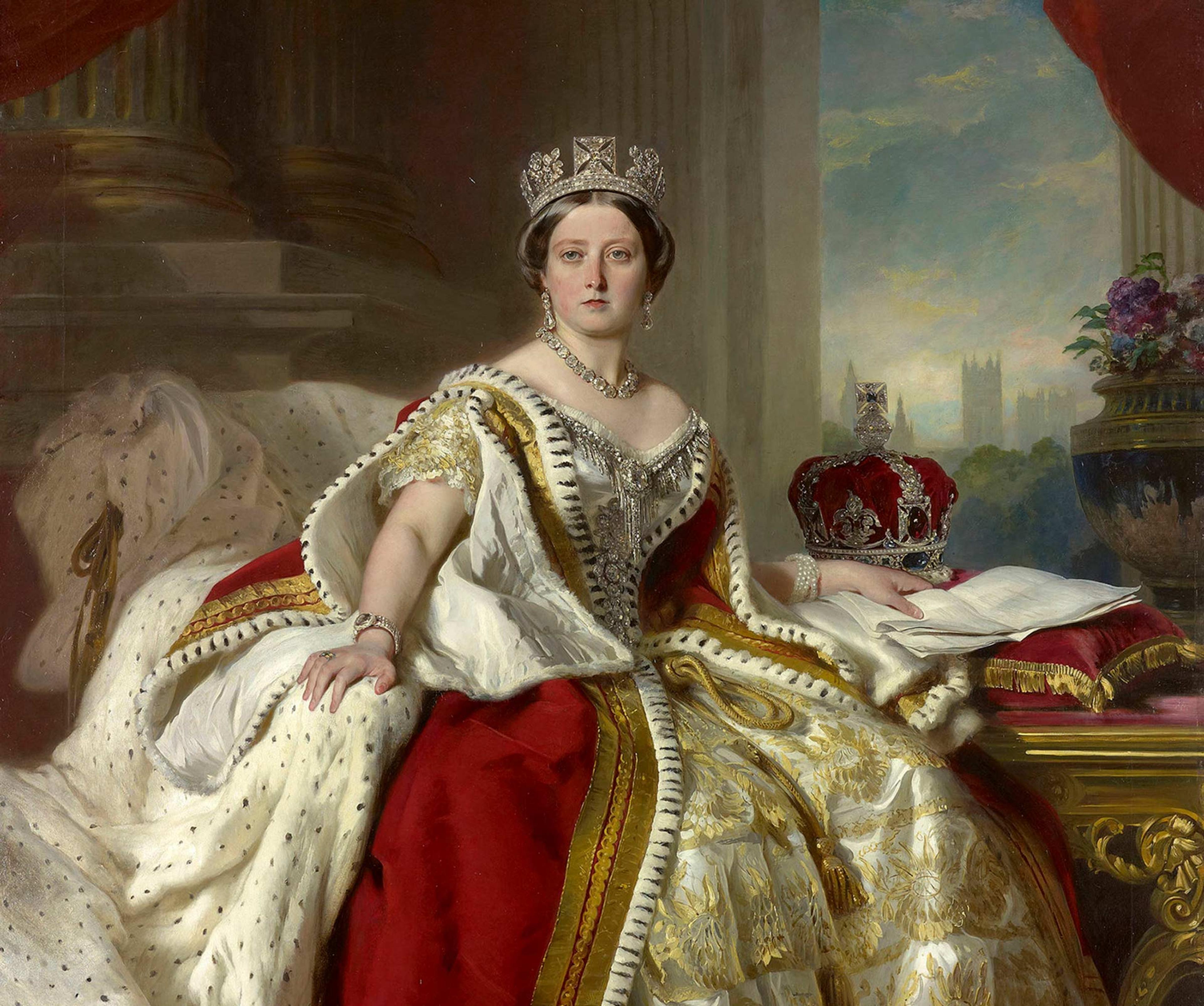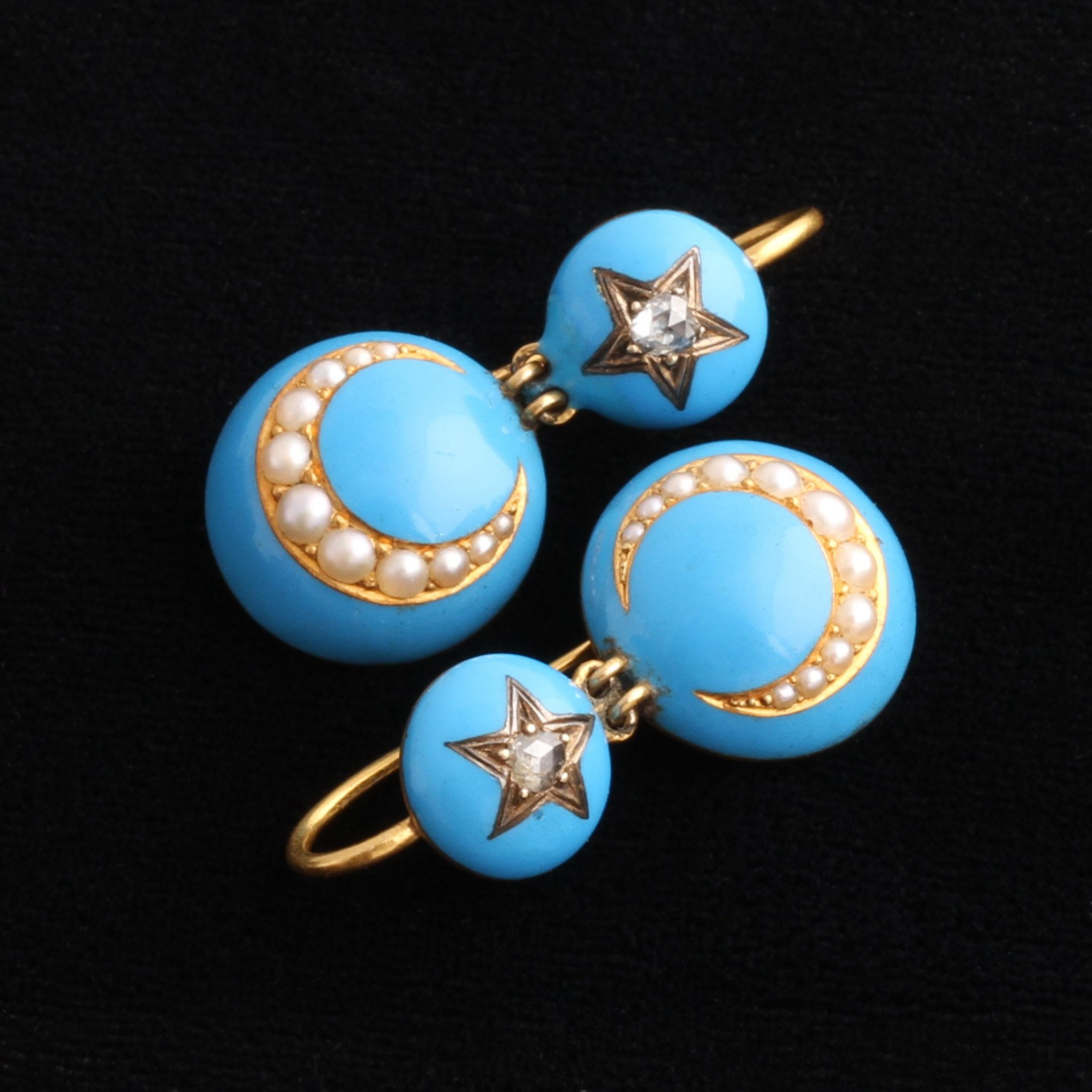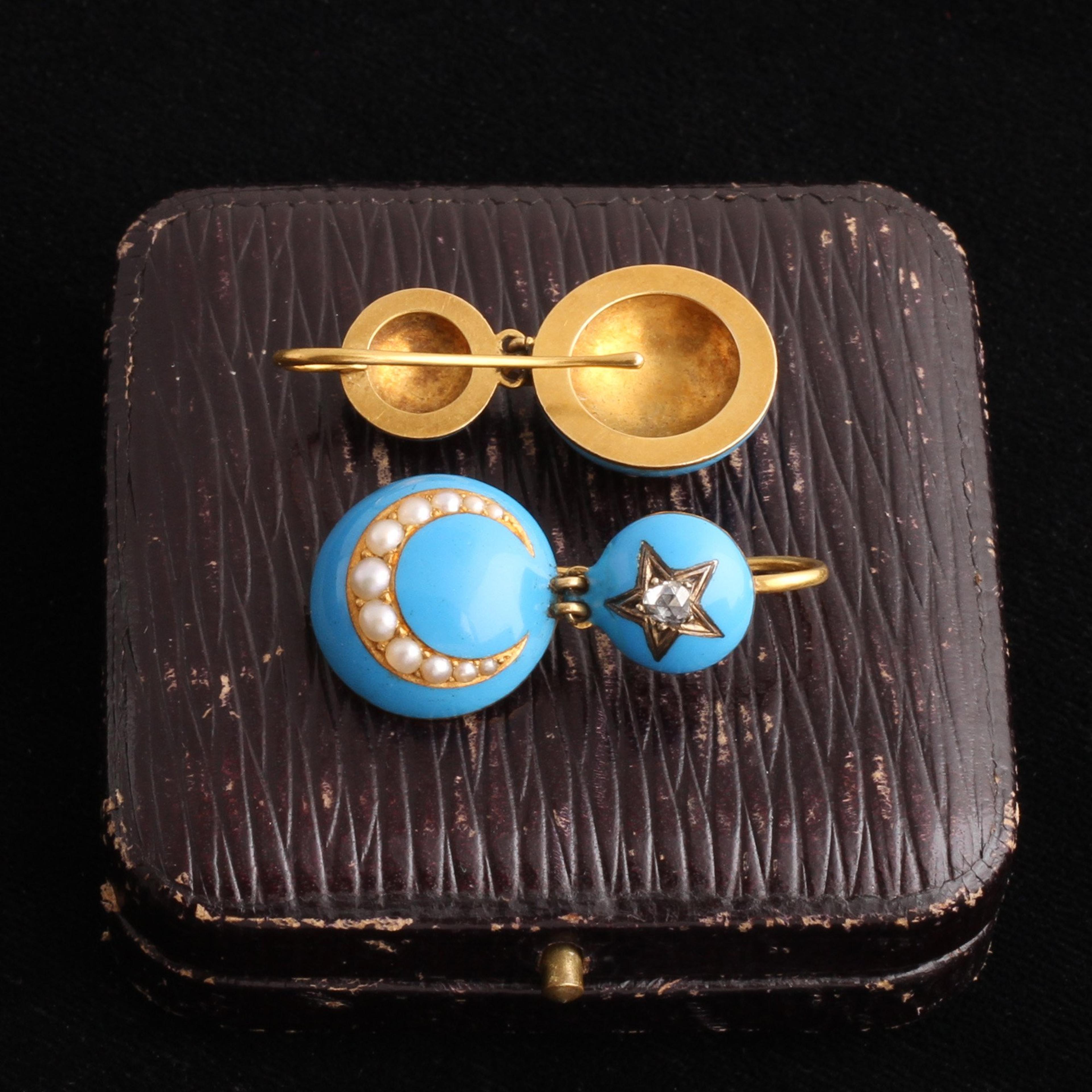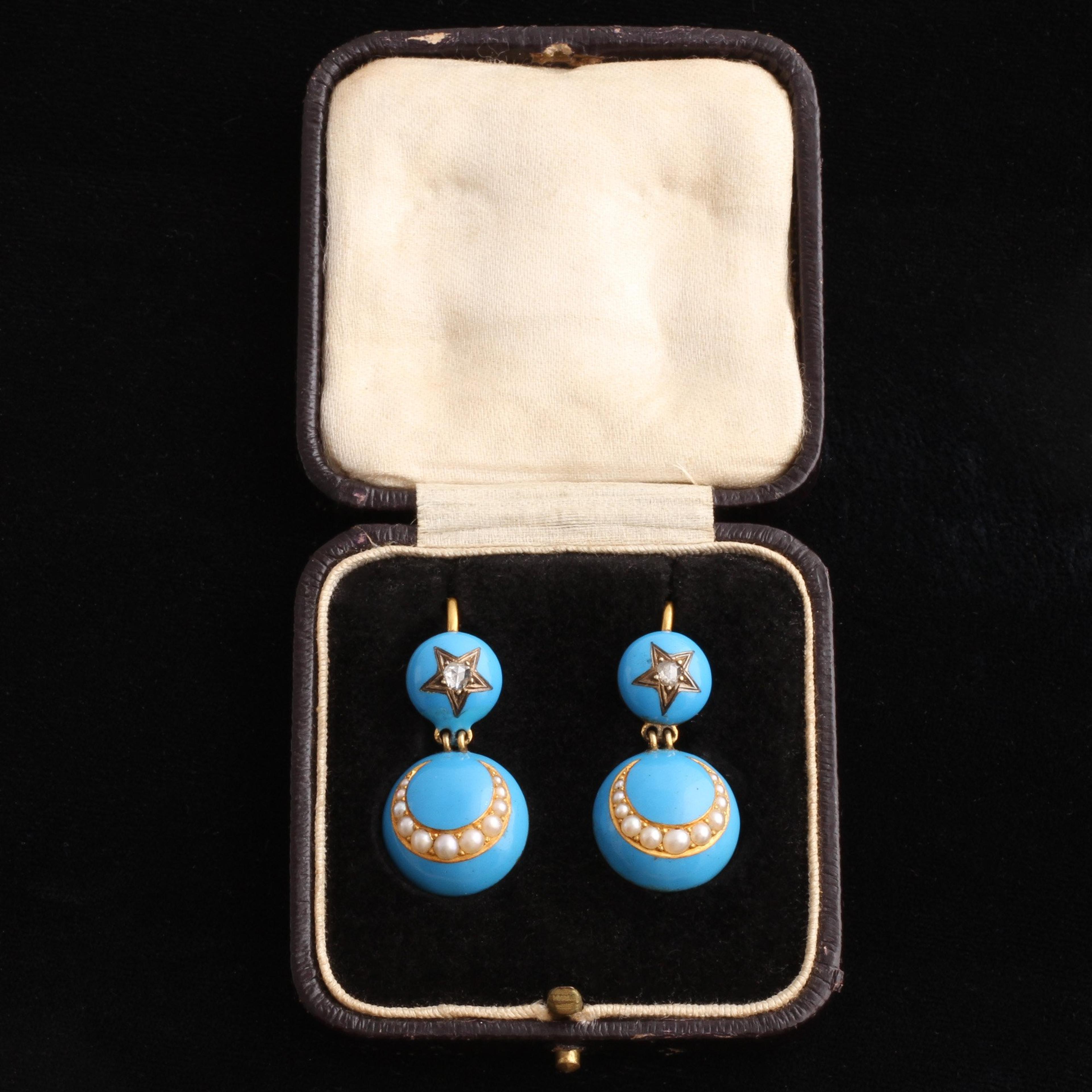Moons and other celestial themes were popular throughout the Victorian period. One explanation for the fascination with the crescent moon dates to the 1870s with the discovery of the "treasure Vaults of Kurium". Within these tombs were jewels made of gold, silver, bronze, alabaster and gems that had been crafted more than 2,000 years before by the ancient Phoenicians. There was tremendous worldwide excitement surrounding the Cypriot discovery, and from the treasure vaults resplendent with crescent-shaped baubles, a trend was born. The crescent motif remained popular through the beginning of the twentieth century and was employed to make brooches, pendants, and earrings like these spectacular moon and star drops. These c. 1870 earrings are made in 18k yellow gold with blue enamel, bright rose cut diamonds and luminous seed pearls. Sold in original fitted box.
thedetails
- Materials
18k yellow gold (tests), blue enamel, 2 2.6mm rose cut diamonds, seed pearls
- Age
c. 1870
- Condition
Very good
- Size
1 1/4" length measured from the top of the ear wire, 5/8" at the widest point
Need more photos?
Send us an email to request photos of this piece on a model.

Aboutthe
VictorianEra
1837 — 1901
The Victorians were avid consumers and novelty-seekers, especially when it came to fashion, and numerous fads came and went throughout the 19th century. In jewelry, whatever fashion choices Queen V. made reverberated throughout the kingdom. The Romantic period reflected the queen’s legendary love for her husband, Albert.
Jewelry from this period featured joyful designs like flowers, hearts, and birds, all which often had symbolic meaning. The queen’s betrothal ring was made in the shape of a snake, which stood for love, fidelity, and eternity. The exuberant tone shifted after Prince Albert passed away in 1861, marking the beginning of the Grand Period. Black jewelry became de rigeur as the Queen and her subjects entered “mourning,” which at the time represented not just an emotional state, as we conceive of it today, but a specific manner of conduct and dress. She wore the color black for the remainder of her life, and we see lots of black onyx, enamel, jet, and gutta percha in the jewelry from this time. Finally, during the late Victorian period, which transitioned along with a rapidly changing world into the “Aesthetic Movement”, there was a return to organic and whimsical motifs: serpents, crescent moons, animals, and Japonaisserie designed for the more liberated “Gibson Girl”. During the second half of the 19th century, America entered the global jewelry market, with Tiffany and Co. leading the way. Lapidaries continued to perfect their techniques, and the old European cut emerged toward the end of the Victorian period. The discovery of rich diamond mines in South Africa made the colorless stones more accessible than ever before.


